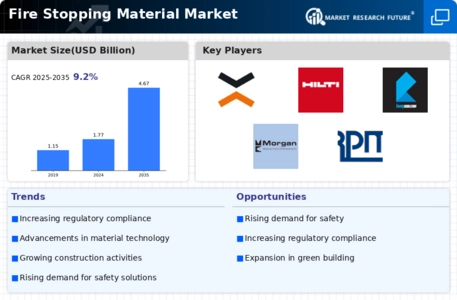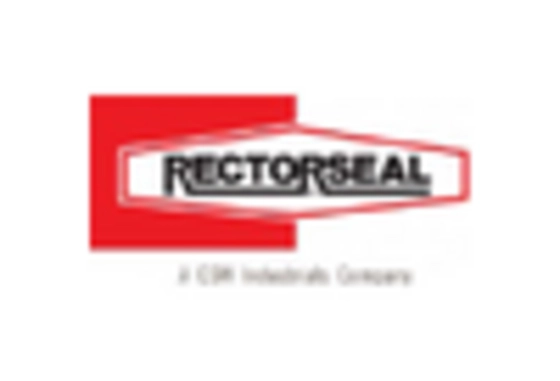Market Share
Fire Stopping Material Market Share Analysis
In the competitive landscape of the Fire Stopping Material Market, market share positioning strategies play a crucial role in determining the success of companies operating in this sector. These strategies involve various tactics aimed at capturing a larger portion of the market and gaining a competitive edge over rivals. One common approach is differentiation, where companies seek to distinguish their products or services from those of competitors. This could involve offering unique features, superior quality, or innovative solutions that address specific customer needs or pain points. By differentiating themselves in this way, companies can attract customers who value these attributes and are willing to pay a premium for them.
Fire stops are primarily used in the construction, plumbing, electrical and mechanical industries. They're designed to prevent fire from spreading, create a proper smoke barrier, and slow down the heat transfer process. Fire stops are designed to prevent the spread of a fire from one area to another by stopping and containing it.
Another key strategy is cost leadership, where companies aim to become the lowest-cost producer in the market. This typically involves streamlining operations, optimizing production processes, and leveraging economies of scale to drive down costs. By offering competitive prices, companies can appeal to price-sensitive customers and gain market share at the expense of higher-priced competitors. However, it's important to strike a balance between cost and quality to ensure that cost-cutting measures don't compromise product performance or reliability.
Market segmentation is another important aspect of market share positioning strategies. By dividing the market into distinct segments based on factors such as demographics, psychographics, or buying behavior, companies can tailor their products and marketing efforts to better meet the needs of each segment. This allows companies to focus their resources more effectively and gain a deeper understanding of their target customers, ultimately leading to higher market share within those segments.
In addition to segmentation, companies may also pursue geographic expansion as a market share positioning strategy. This could involve entering new markets, either domestically or internationally, where there is untapped demand for fire stopping materials. By expanding their geographic footprint, companies can access new customers and revenue streams, as well as diversify their risk across different regions.
Strategic partnerships and alliances can also play a crucial role in market share positioning. By collaborating with other companies in complementary industries or forming strategic alliances with key stakeholders, companies can leverage their combined strengths to gain a competitive advantage. This could involve partnering with distributors or contractors to expand market reach, or collaborating with research institutions to develop new and innovative products.
Lastly, effective branding and marketing are essential components of market share positioning strategies. Building a strong brand identity and promoting it through targeted marketing campaigns can help companies differentiate themselves from competitors and attract customers. This could involve investing in advertising, sponsorships, or digital marketing initiatives to raise brand awareness and drive sales.
Overall, market share positioning strategies are essential for companies operating in the Fire Stopping Material Market to gain a competitive edge and achieve sustainable growth. By differentiating their products, optimizing costs, segmenting the market, expanding geographically, forming strategic partnerships, and investing in branding and marketing, companies can effectively position themselves for success in this highly competitive industry.

















Leave a Comment